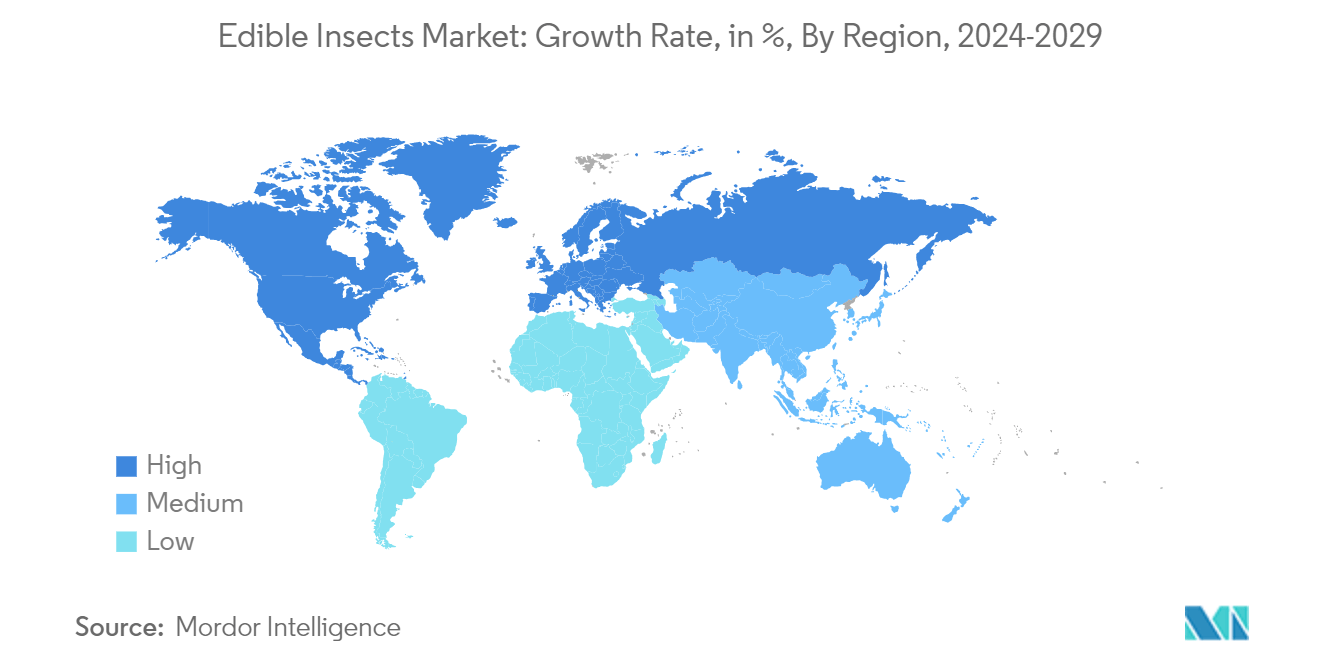Market Trends of Edible Insects Industry
Beetles are the largest Insect Type
Beetles are emerging as a promising sustainable food source for human consumption. They are renowned for their diversity and adaptability and play a vital role in ecosystems across the globe. Their high protein content, coupled with a rich array of vitamins and minerals, fuels the growth of this segment. On average, beetles boast a protein content of about 40-60% by dry weight. This density not only eclipses that of traditional livestock like beef and chicken but also comes with essential amino acids crucial for human health. Beyond protein, beetles are a treasure trove of B vitamins, notably B12, which is essential for nerve function and red blood cell formation. They also provide key minerals such as iron, zinc, and magnesium, all of which are indispensable for various physiological processes. Thus the health benefits associated with the consumption aids the growth of the segment.
Additionally, the environmental benefits of incorporating beetles into the human diet are considerable. Compared to traditional livestock farming, beetle farming requires significantly less land, water, and feed. They are efficient at converting feed into edible biomass, requiring far less feed than cattle or poultry to produce the same amount of protein. Furthermore, beetles generate fewer greenhouse gases, contributing to a lower carbon footprint. Their ability to thrive on organic waste products also makes beetle farming a viable method for recycling food waste, further enhancing its sustainability. This makes them one of the most commonly consumed edible insects among consumers worldwide. As per an article published on Research Gate, in 2021, beetles represent 31.2% of total insects consumed followed by caterpillars, ants etc.
Furthermore, in various cultures across Asia, Africa, and Latin America, beetles are traditional food sources for the population. Beyond this tradition, the culinary exploration of diverse beetle species is broadening their incorporation into a range of dishes, from snacks to main courses, thus fueling the segment's expansion. In 2023, Lidl, an Ireland-based company, introduced burgers crafted from soy and real beetles under its My Street Food range. Such product launches are propelling the segment's growth. Consequently, the beetles' high protein content, combined with their minimal environmental impact and the recent snack-centric product introductions, are driving the segment's growth during the forecast period.

Europe Dominates the Market
Europe leads the global edible insect market, drawing increasing interest from consumers and businesses alike. This surge is largely driven by a growing appetite for protein-rich foods and a push for diverse protein sources across the continent. As dietary preferences evolve, insect farming is gaining traction in Europe, with consumers showing a heightened openness to insect-based foods. Additionally, several factors are propelling the edible insect market, including the anticipated approval of insects as a novel food in Europe, a growing product diversity, product availability, and increasing consumer acceptance. For instance, in 2022, the ValuSect consortium, comprising European insect producers, provided services valued at EUR 460,000 (USD 496,600) to 18 edible insect enterprises. These chosen companies will collaborate with expert partners to refine their innovative concepts, enhancing insect production and bolstering consumer acceptance in North-West Europe, thus supporting market growth.
In recent years, the region has witnessed a significant rise in the production and trade of edible insects and insect-based foods. This surge is largely attributed to increased awareness and the implementation of European regulations. Recognized as novel foods, edible insects and their derivatives undergo rigorous health assessments and must obtain approvals per the EU's Novel Food Regulation. The market is further buoyed by the inclusion of additional species. One such recent example is the 2023 endorsement of the grain mould beetle larvae, or Alphitobius diaperinus, under this regulation. This official recognition allows companies to use Alphitobius diaperinus larvae in diverse forms be it frozen, paste, dried, or powdered across a broad spectrum of food products intended for the general public. Notably, the powdered form has also received approval for inclusion in adult food supplements. Thus, the recognition of more insects as novel foods not only amplifies their consumption but also propels market growth. Hence, the rising demand for insect-based foods, combined with the endorsement of new species as novel foods, is driving market expansion during the forecast period.


